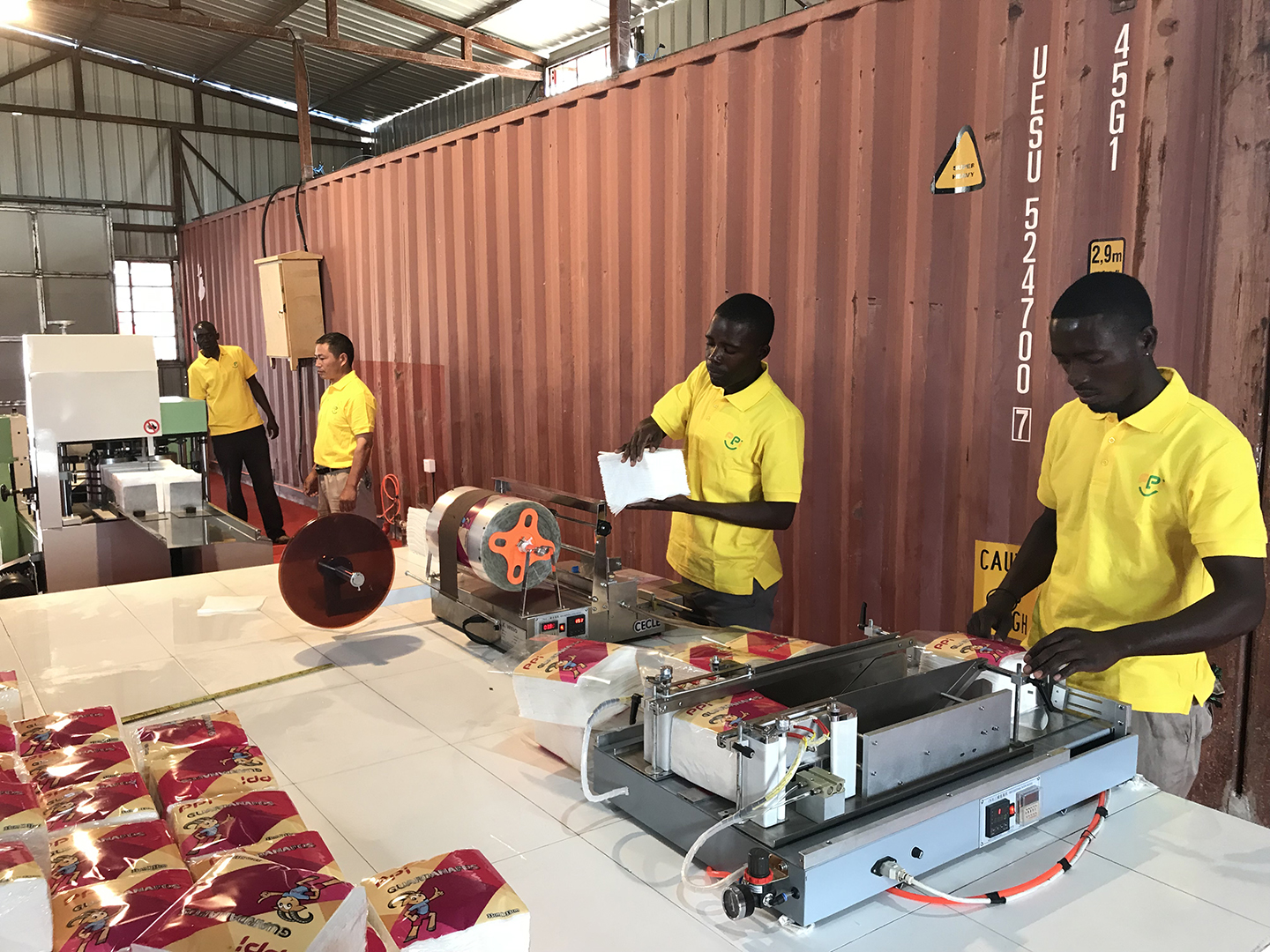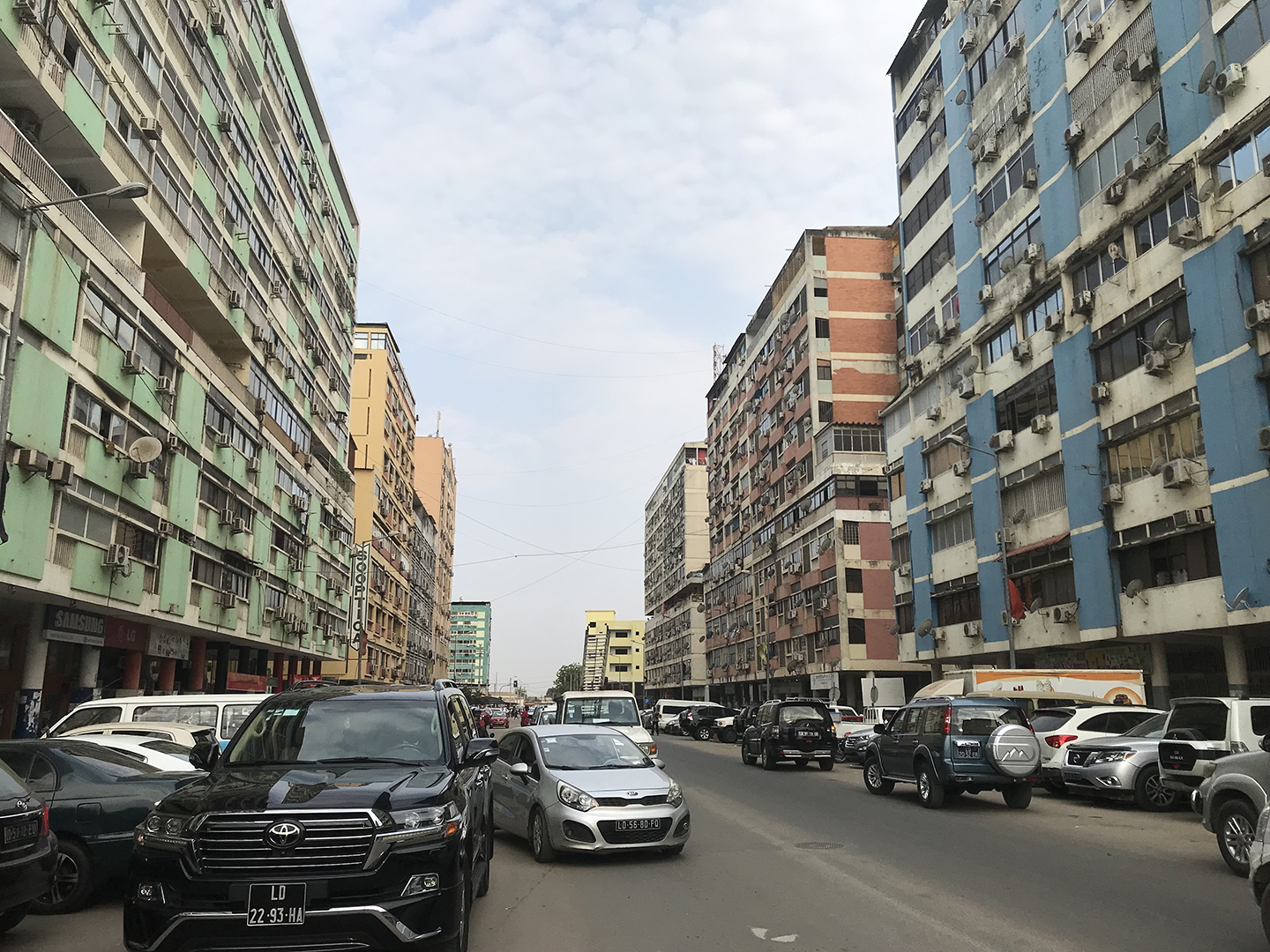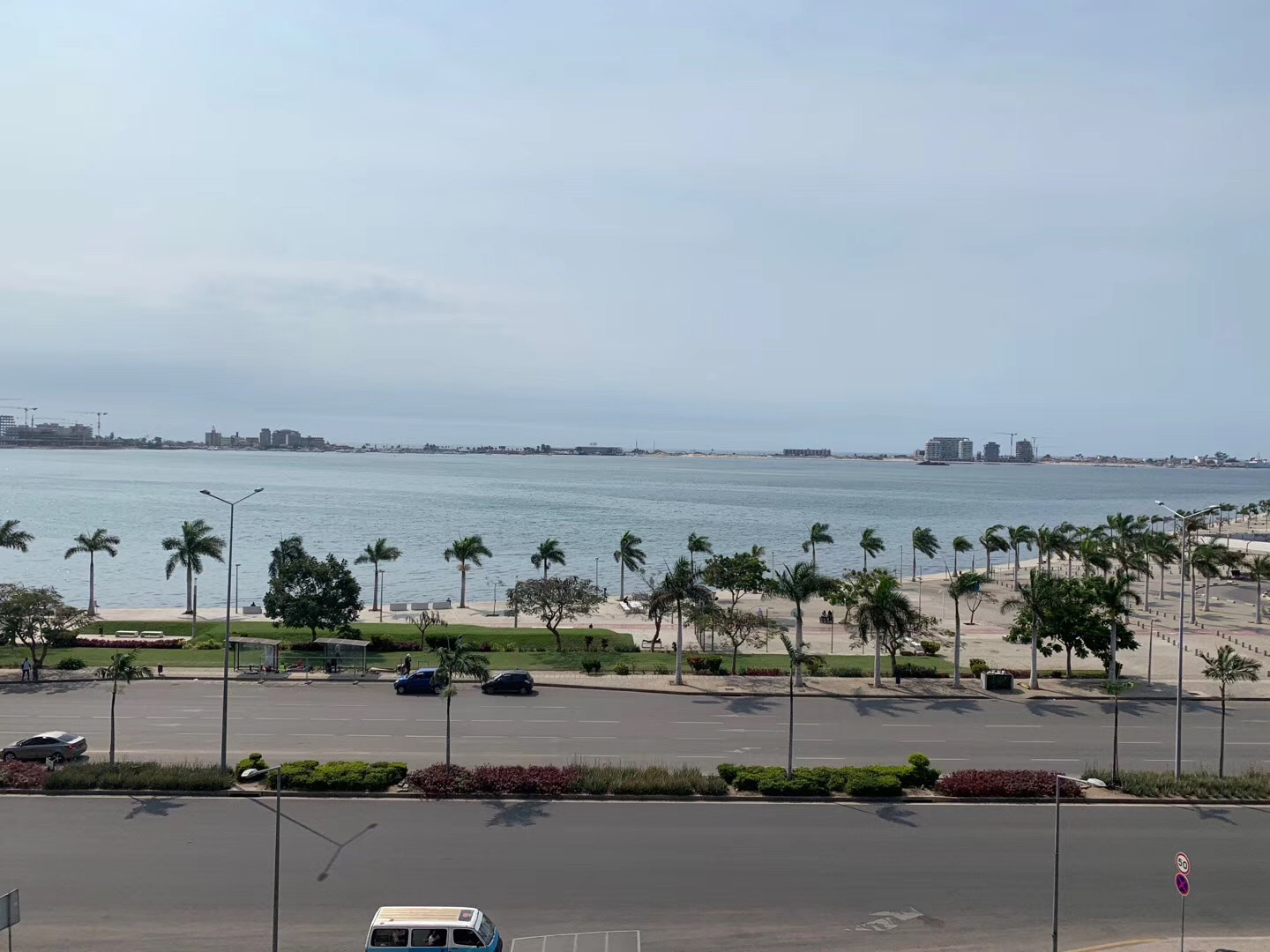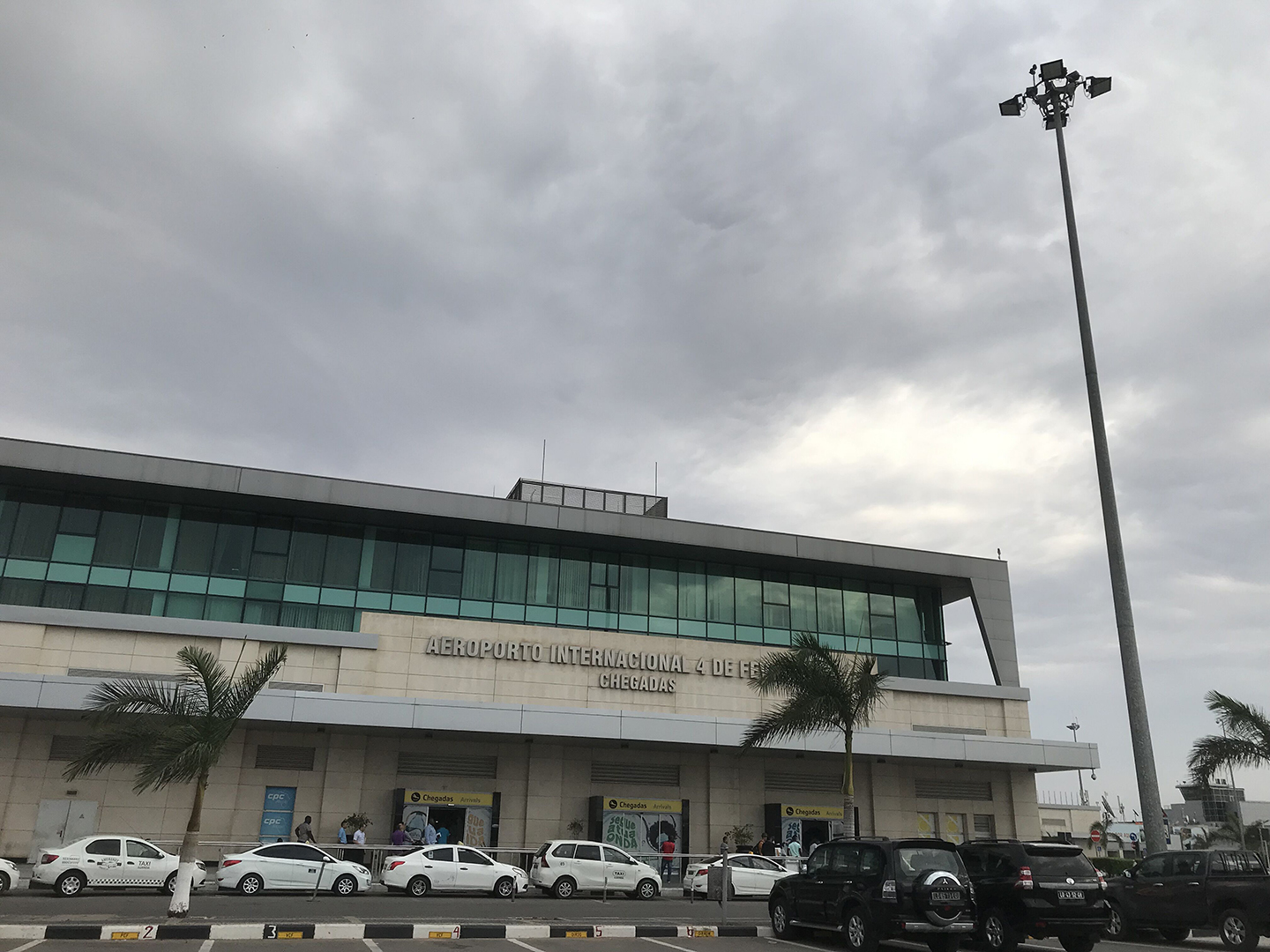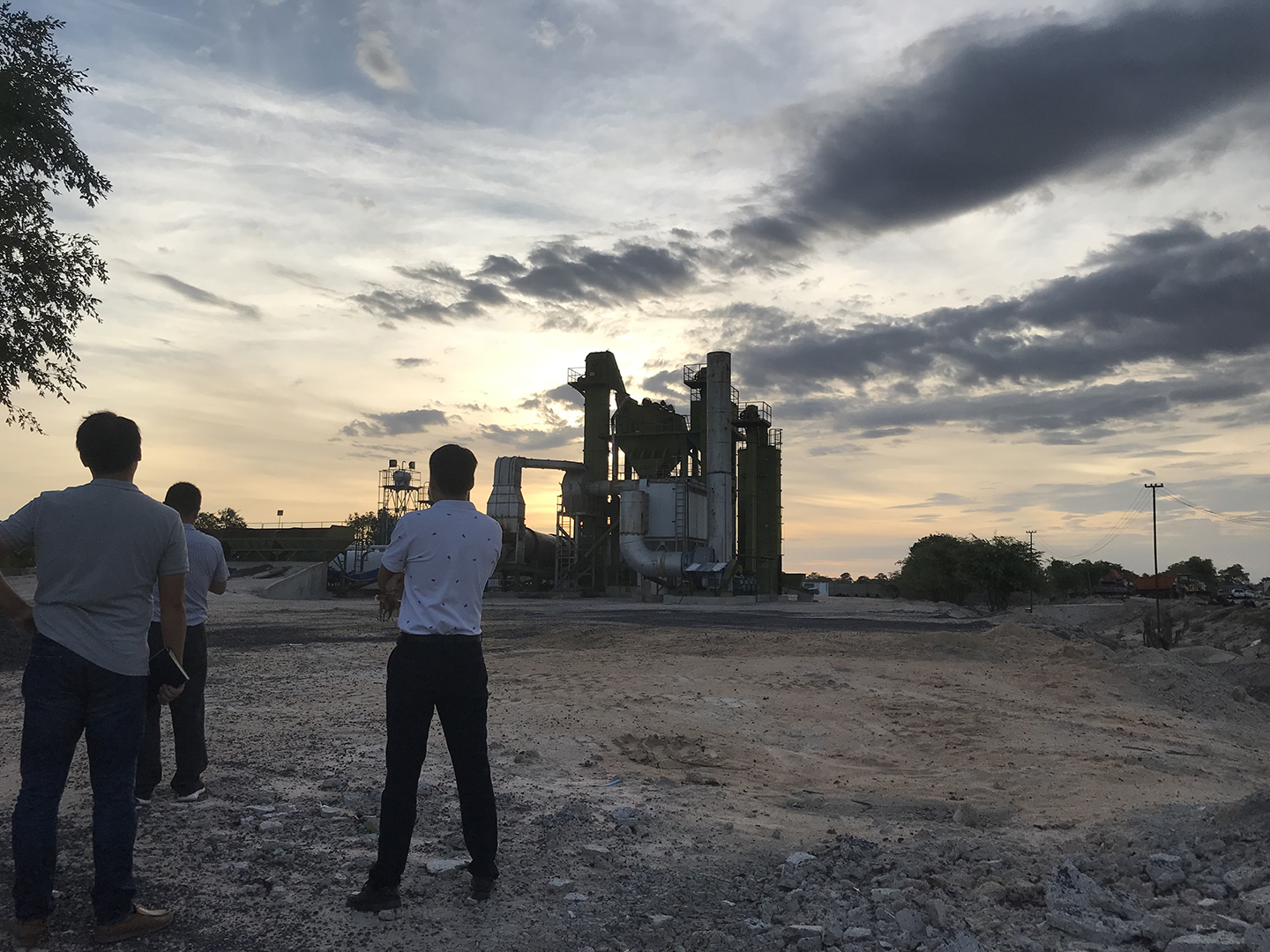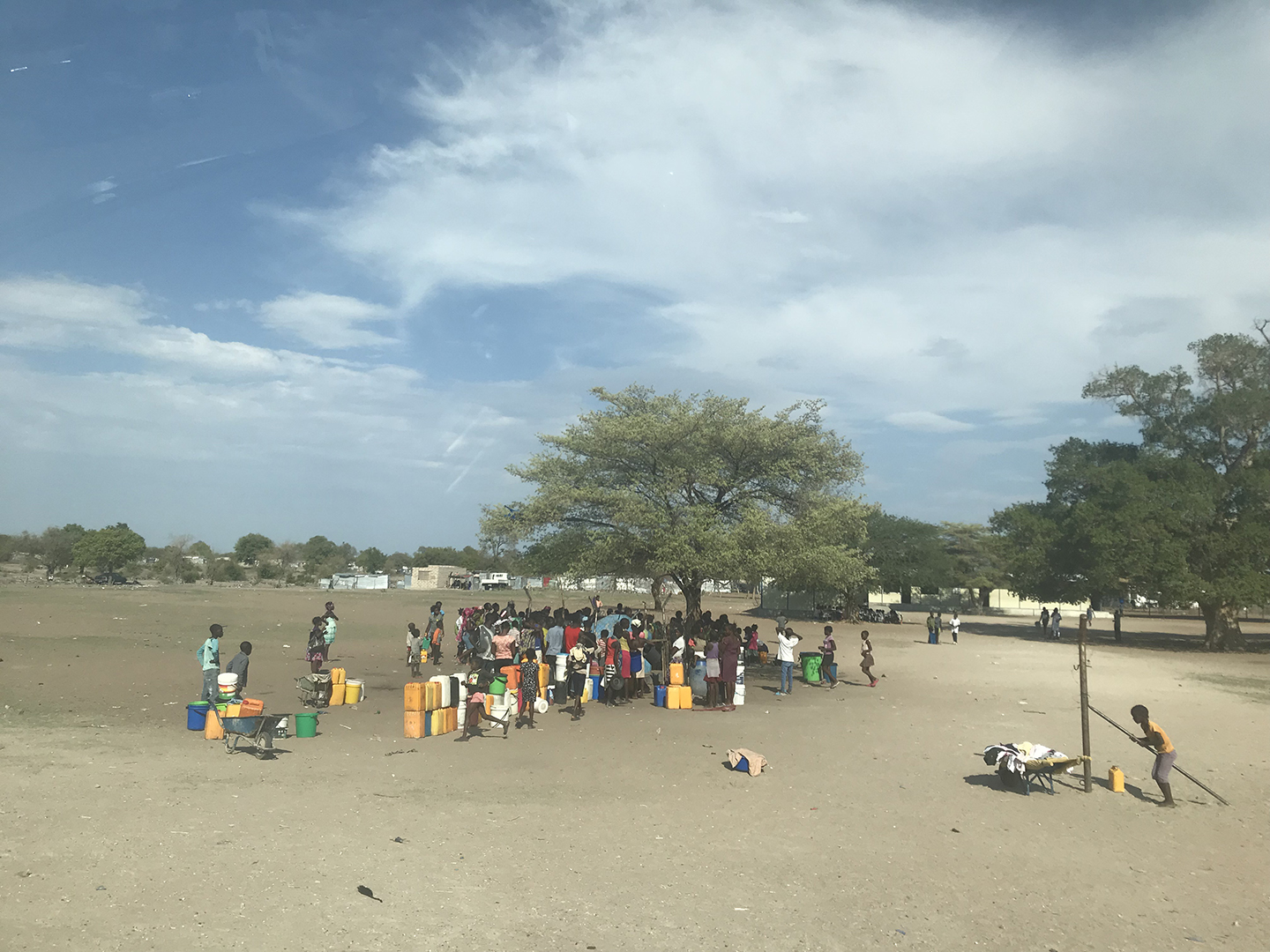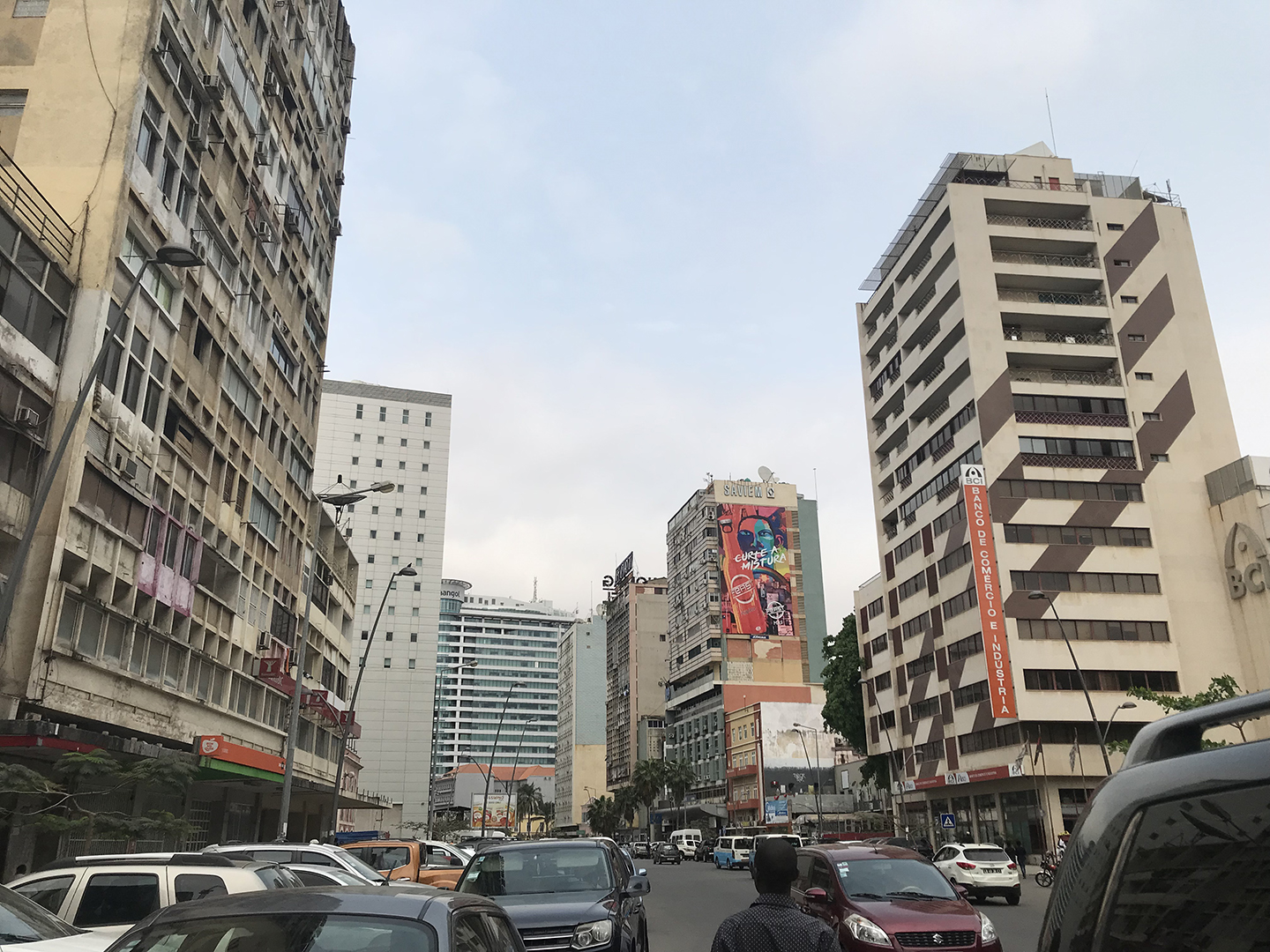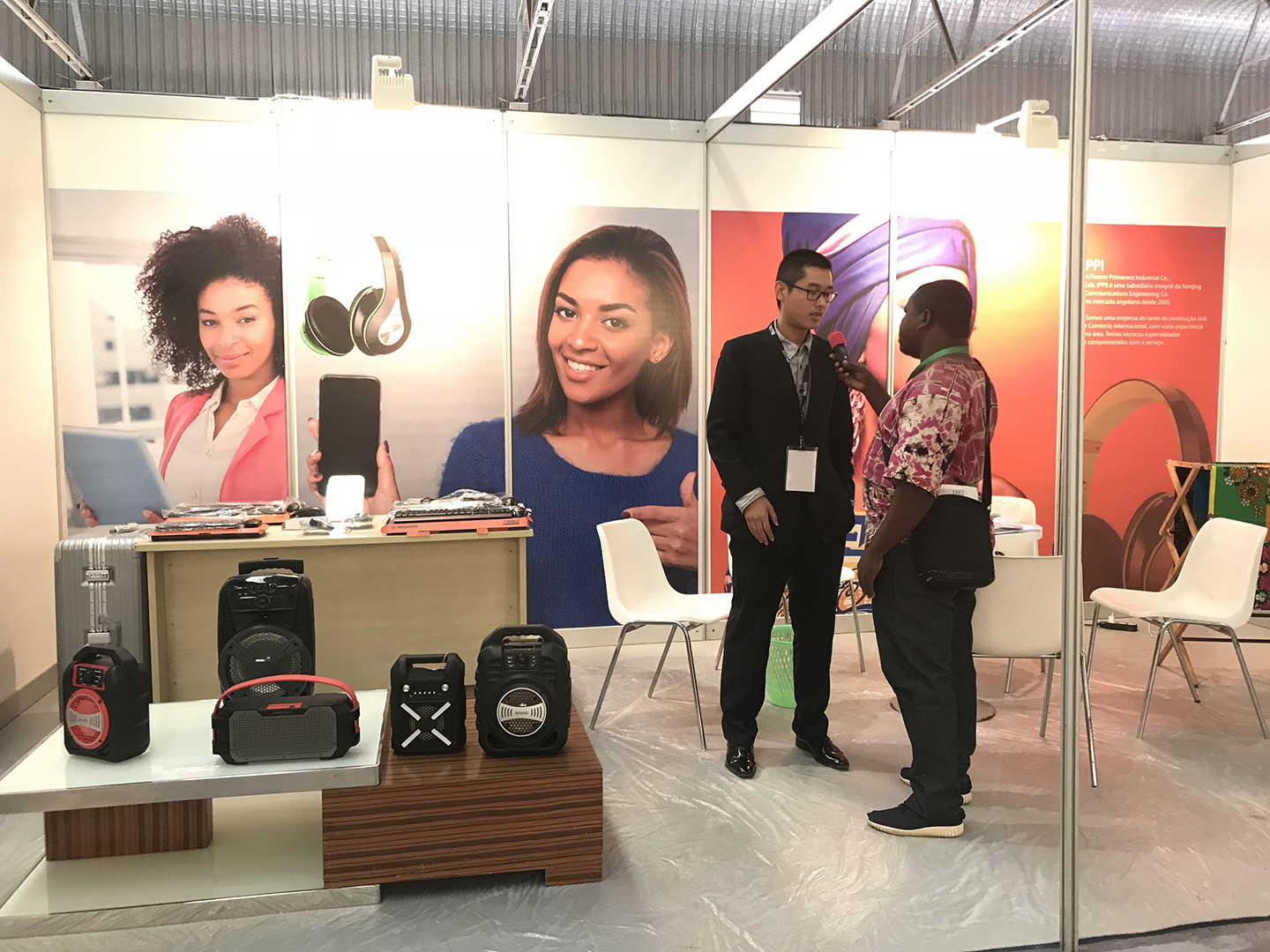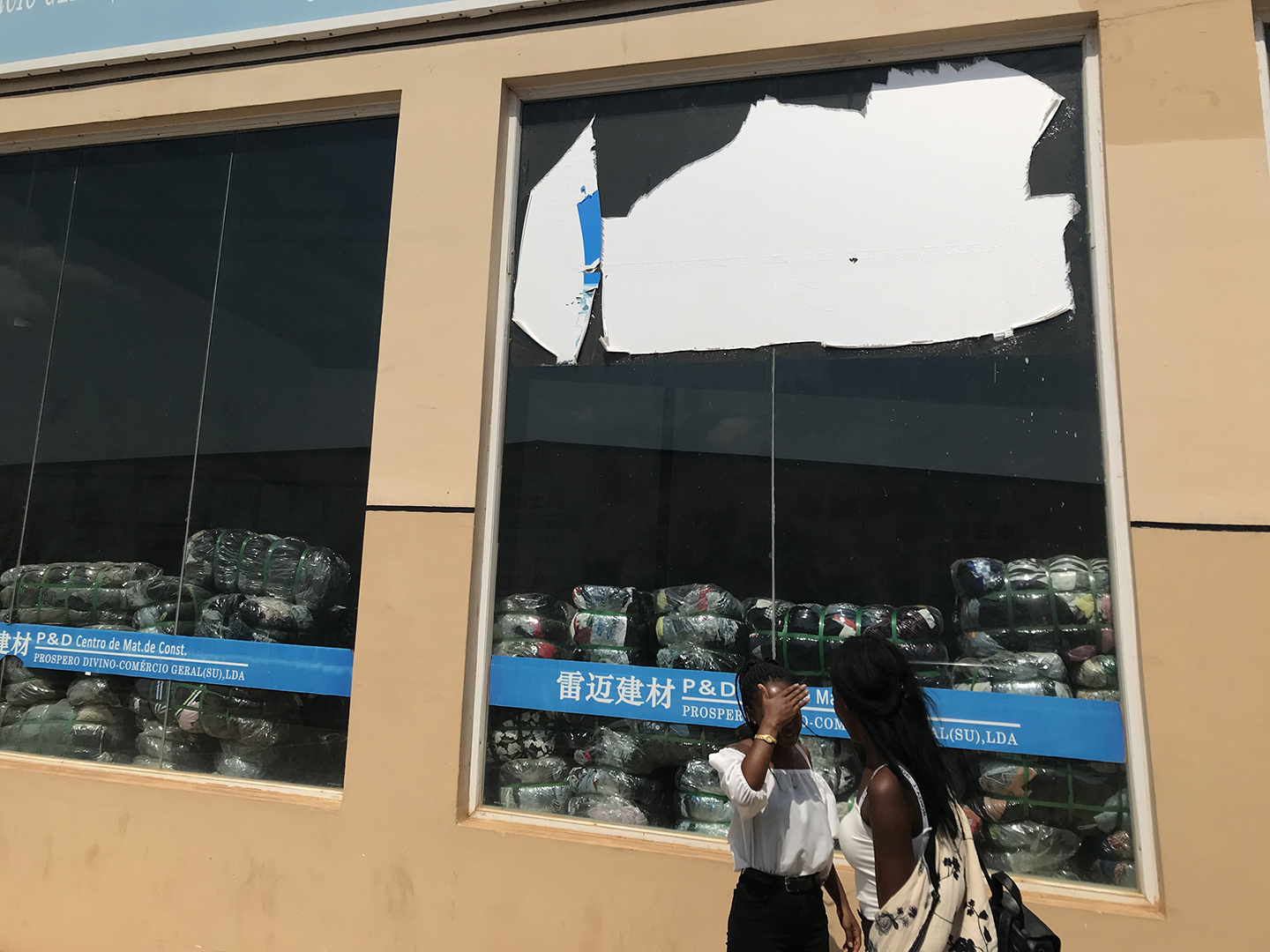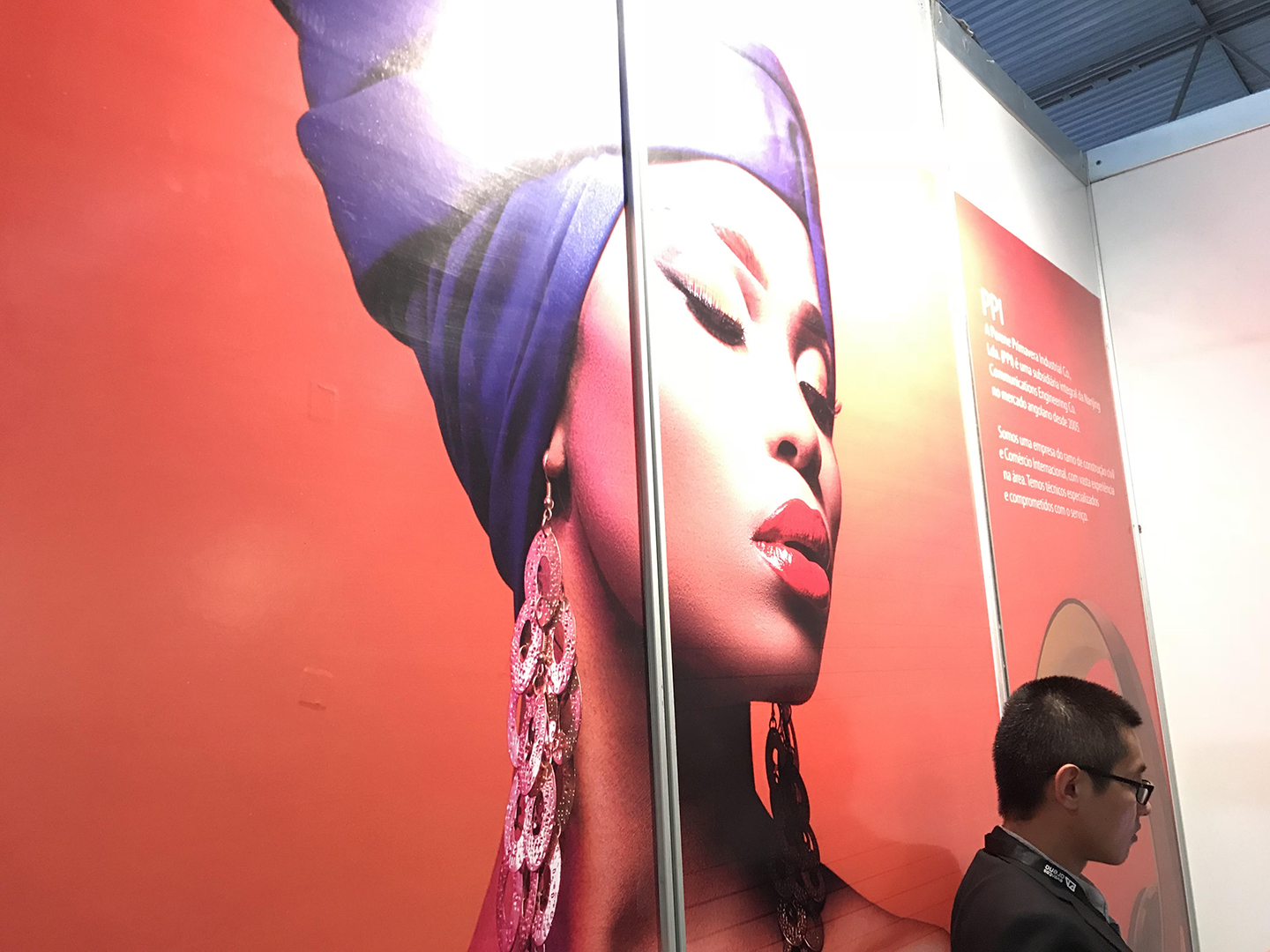Oil-for-Development: The Shifting Dynamics of Sino-Angolan Relations
The following article is an updated adaptation from the report « Les relations économiques Chine-Angola depuis les accords de paix de 2002 » written for the French ministry of finance (DG Trésor) between June 2018 and March 2019. A public version of the report (in French) is available here. The report entails documentary research from academic sources, French, English, Portuguese and Chinese press, along with the result of a 3-month field research in and around Luanda. Please note that neither this article nor the public version of the report represent the official view of the French ministry of finance.
Formerly a showcase for Portuguese colonialism, the Angolan capital is nowadays a motley mosaic: faded facades of 1960s apartment blocks rub shoulders with red corrugated roofs of shanty towns – or musseques – reflected in multiple mirrors of pharaonic towers. Some, interrupted in their pursuit of the sky by the abrupt fall in the price of oil in 2014, are surrounded by silent cranes.
If these towers symbolize a part of the China-Angola puzzle built on a background of real estate speculation, Chinese construction firms has left an even more salient mark in the underground of downtown Luanda. Sewer seals carry the Chinese characters for running water (gongshui 供水) from the Marginal prestigious sea promenade which next phase of development, entrusted under the previous presidency to China Railway 20 for 142 million USD is under renegotiations with China Road and Bridge corporation, all the way to the 5000 hectares orthogonal maze of Kilamba Kiaxi, the 3,5 billion USD satellite town built by CITIC formerly qualified as Africa’s largest ghost town.
“China has provided more than 60 billion USD in loans to Angola for infrastructure construction […]. So far, China has helped Angola build 2,800 kilometers of railways, 20,000 kilometers of roads, 100 schools, 50 hospitals and 100,000 houses.” Estimations on the sum of Chinese loans to Angola range around 50 billion USD, from these Chinese official figures to academic calculations of 43 billion USD as of 2017. According to Goldman Sachs data, China Development Bank, China Eximbank, and the ICBC held 56% of Angolan debt in 2018. China concentrated 61% of oil export, for a value of 15.3 billion USD. Angola has been one of the biggest beneficiaries of Chinese State owned enterprises (SOE) infrastructure construction contracts over the last decade.
While these public contracts suffered from the crisis and most of the once massive Chinese workforce has deserted the country after 2014 due to economic turmoil (from 300 000 nationals in 2014 to 50-70,000 today according to the Chinese embassy), a different kind of crowd bustles around Luanda’s expressway. Former SOEs employees and newly arrived entrepreneurs settle – under privileged conditions, a former Reuter journalist hinted – individually or in small trade zones in the hope of tackling growing local demand for consumer products.
What is the Angola mode?
After nearly 40 years of destructive cold war-fueled conflict, the assassination of Jonas Savimbi in February 2002 made Eduardo dos Santos the unrivaled leader of the country. In dire need for financing his infrastructure reconstruction plan, he turned to the IMF that made financial help contingent on a certain number of economic reforms, notably in the very opaque oil sector. When China offered loans without such conditions, Angola became quickly convinced ot the interest in building closer ties with the country.
China Exim bank initial loans presented two other characteristics that would later be described as the Angola model, although this model had been initiated in South Sudan, and replicated in Congo, Senegal and Ghana. First, the reimbursement of capital and interests is made through commodities exports, in the Angolan case: oil. Second, the loans are used to finance construction contracts devolved to pre-determined Chinese firms. Although coming ‘without political string’, Chinese aid is hence said to be tied to these contracts. This characteristic makes such support incompatible with the OECD definition of development aid. However the interest rate is very competitive and the loans also entailed a long ‘grace period’.
The China-Angola relationship in this frame has been qualified as a marriage of convenience. On the Angolan side, the elite managed to finance its reconstruction plan, without the embarrassment of political reforms. On the Chinese side, national companies found both energy resources and external markets. Politically, the rationale displayed for the Angola model is to fulfill the development need of both countries on an equal footing. Presenting itself as a developing country, China criticizes the so-called disinterested help of developed countries and affirms it can achieve ‘Mutual Benefit, Common Victory’ (huli gongying 互利共赢) through its help system.
Why is it changing?
The notion of ‘Angolan model’ or ‘mode’ has been criticized on a theoretical level by several authors. The concept overlooks the existence of precedents for such resource-backed loans, be it those made by western banks to Angola with high interest rates or Chinese experience as a recipient of Japanese aid. The ‘Angola model’ also implies the idea of a Chinese ‘masterplan’, which wrongly minimizes the Angolan agency, that is, the role of the Angolan elite pursuing its personal interests in framing the bilateral relationship. Finally, conceiving the China-Angola relationship as entering the frame of a pre-conceived model amounts to considering the overwhelming presence of the gray and black economy as a mere externality, when it is in fact an early defining characteristic of the bilateral relation that led to massive money embezzlement through the CIF.
The model is also questioned on the field. The China-Angola relationship is undergoing major reconfiguration in the aftermath of the oil price crisis, due to political change and economic factors in both countries.
Monitoring of Chinese loans led to infamous money embezzlement to the profit of the Dos Santos family and their allies. A US report of 2009 revealed the role of the China International Fund, a Hong Kong based investment fund, in a joint vehicle with the oil company Sonangol, in African corruption schemes. In 2011, an IMF note evaluated at 32 billion USD the amount of public money diverted by Sonangol. In a recent study, the Catholic University in Luanda would find around 20 billionn USD that were unaccounted for in the State budget. Massive corruption considerably damages Chinese interests in economic and diplomatic terms. The early 2010s witnessed the dissociation of Beijing from the grey zone economy in a context of fight against corruption, as illustrated by the arrestation of two key figures: Xu Jinghua chairman of the board at CIF and Su Shulin, former manager of Sinopec.
The sudden drop in the oil price in 2014 has had a tremendous impact on the Angolan side described by a Chinese observer as a sudden economic winter. It caused a shock in public revenue, pushing the government, deprived of a quarter of its income, to cease payment on many of its construction contracts. The abrupt worsening of the economic situation also led to a boom in money-related crimes such as burglary and ransoming, for which Chinese expatriates are privileged targets. Both the economic melancholy and the surge in violence ended up in massive departures in the Chinese community.
The initial model relied on the execution of contracts by Chinese SOEs using massive amounts of their cheap workforce. However, adding up to increasing salary in China, construction workers interviewed affirmed they benefitted a higher security premium for working in the country. According to the vice president of China Angola Chamber of Commerce, massive arrival of Chinese workforce in China came as rather disorganized, and was more of a burden to the local diplomatic authorities. In spite of the small number of staff, they had to deal with criminal cases and criticism of diverting job opportunities from the locals. Some bilateral organization representatives call for a quality shift in Chinese immigration. As the Angolan government became increasingly unable to pay Chinese SOEs for big infrastructure contracts, some Chinese entrepreneurs redirected their activity to tackle local customers, engaging in wholesale and retail. The activity of Chinese private actors is encouraged by official authorities.
What is happening now?
Although both sides have announced a change in model since the early 2010s, it remained nothing more than a posture until recently. In 2016, CEXIM loans for the financing of Caio port and ICBC for Caculo Cabaça power station contributed to feeding the financial arrangements of the children of the president. Nonetheless, Joao Lourenço, elected president in August 2017 and comparing himself to Deng Xiaoping, surprised the international opinion by expelling Filomeno and Isabel dos Santos of their official positions. He gives encouraging signs for the economic management of the country: rationalization of public expenditures and revenues, new exchange rate policy, ambitious reforms of the legislative framework, resumption of discussions with the IMF.
能熬过这个冬天,谁就能吃到肉 “He who survives through winter will get to eat meat”. As a former engineer at CITIC crudely sums up, the Chinese enterprises that have not left the country hope to gain a decisive advantage in their long-term presence when the economy starts again. They benefit from political rapport de force between the two countries that allows for a privileged treatment of Chinese nationals: the signing of an agreement for an accelerated visa procedure is an example. In addition, their reorientation is facilitated by a strong network and in-depth knowledge of the country. Along the expressway outside Luanda, where retailers now settle, stand several major Chinese-made projects: Kilamba Kiaxi town, 11st November stadium, Agostinho Neto university.
About the Photographer
Qi Shi (啟石) was born in Chinese countryside Bengbu, Anhui province. He studied international trade at Nanjing Audit University during 2009-2013. After that, he worked for 4 years at the Changrun Group in Luanda, Angola, a Chinese private enterprise under transition. Relentlessly taking pictures during his free time and deeply marked by Angolan changing landscapes, Qi Shi wishes to move toward documentary filmmaking. He has a strong desire to express, hoping to make people pay more attention to the broader word.
-
2020/06/01

-
Angola

-
Lucie Sénéchal Perrouault


the other map
Explore arrow
arrow
loading map - please wait...

